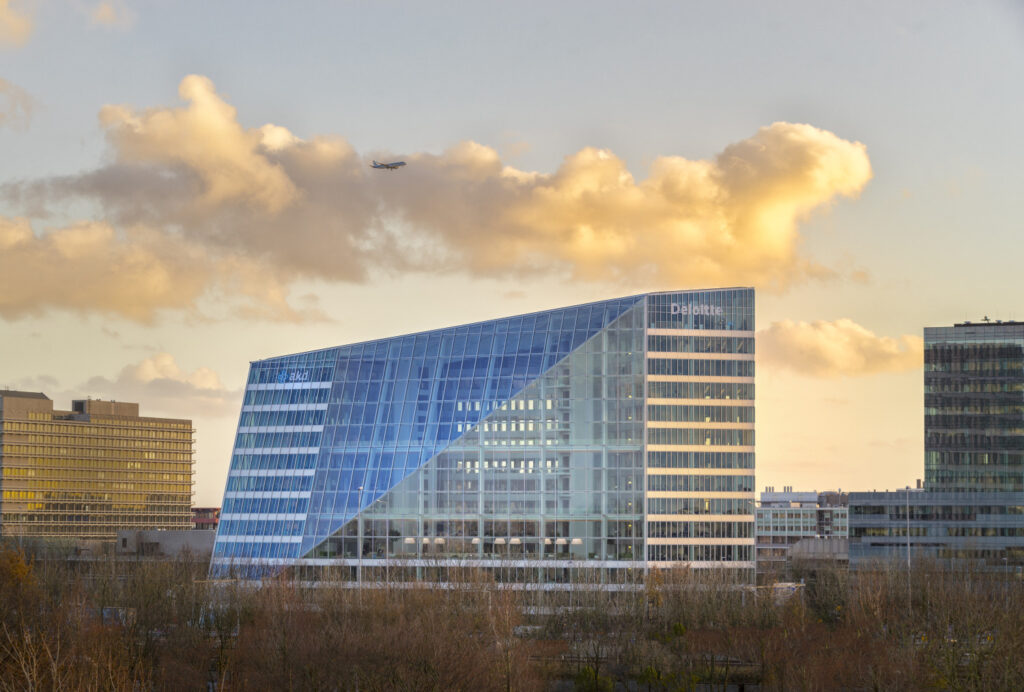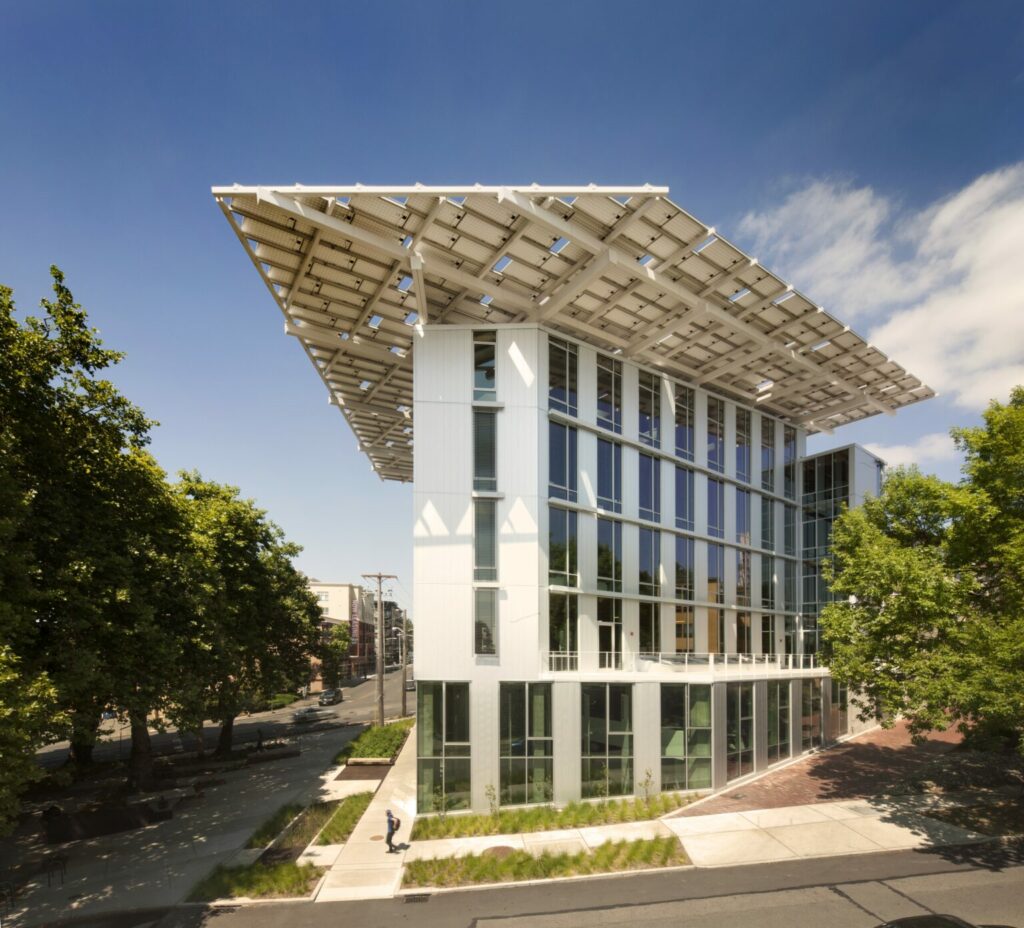Unlock Premium, Members-Only Content
Your source for the most relevant updates in sustainable construction
Introduction to Ecological Architecture
What is Ecological Architecture?
Ecological architecture isn’t just a trend; it’s an urgent shift towards integrating environmental concerns directly into the building design process. It’s about creating spaces that not only serve human needs but also respect and enhance the environment. This approach to architecture aims to minimize environmental impact while maximizing human comfort and overall ecosystem health.
The Growing Importance of Ecological Design
In a world grappling with climate change, resource depletion, and a growing population, the significance of ecological architecture has never been more pronounced. Buildings are more than just shelters; they are part of larger ecological systems. By designing buildings that act as extensions of the natural environment, architects can help preserve ecological balances, reducing the carbon footprint of construction and fostering sustainable living practices.
Core Principles of Ecological Architecture
Integration with Natural Landscapes
Harmonizing with nature isn’t just about aesthetics—it’s a functional strategy that increases the longevity and sustainability of a building. Here’s how ecological architects typically align with natural landscapes:
- Site-specific designs: Tailoring building layouts to mesh with the land’s topography, flora, and fauna.
- Preservation of natural features: Incorporating existing trees, water bodies, and landforms into the architectural design.
Energy Efficiency and Material Sustainability
Reducing a building’s energy consumption while selecting environmentally friendly materials is a cornerstone of ecological architecture. Key practices include:
- Using renewable energy sources: Solar panels, wind turbines, and geothermal systems.
- Sustainable materials: Bamboo, reclaimed wood, and recycled steel and glass.
Water Conservation Techniques
Managing water efficiently is critical in sustainable design. Ecological architecture often employs systems that reduce water use and promote its reuse:
- Rainwater harvesting systems: Collecting and storing rainwater for landscaping and flushing toilets.
- Low-flow fixtures: Installing faucets, showerheads, and toilets that use less water.
- Greywater systems: Reusing water from sinks, showers, and washing machines for irrigation.
By understanding and implementing these core principles, ecological architects craft buildings that are not just places to live or work, but active participants in a healthier, more sustainable world. This thoughtful approach to building design is more than a choice—it’s a necessity for the future of our planet.
Design Strategies in Ecological Architecture
Bioclimatic Design
Bioclimatic design takes the local climate into account to naturally enhance comfort levels within buildings. It uses the environmental conditions to regulate temperature and lighting, making buildings more energy-efficient and comfortable. Here’s a quick look at how bioclimatic principles are applied:
- Orientation of buildings: Structures are oriented to maximize natural sunlight during the winter and minimize heat during the summer.
- Thermal mass: Materials that absorb and store heat during the day and release it at night are incorporated to stabilize temperature fluctuations.
Passive Solar Heating and Natural Cooling
Leveraging the sun’s energy for heating and using natural airflows for cooling are fundamental to reducing reliance on mechanical systems. Here are some techniques used:
- Solar gain: Designing large south-facing windows that allow maximum sunlight penetration in colder months while providing shade in the hotter months.
- Natural ventilation: Strategic placement of windows, vents, and openings to enhance airflow and cool interiors naturally.
Green Roofs and Walls
Living green roofs and walls are not only visually appealing but also functional. They provide insulation, reduce stormwater runoff, and help filter pollutants and carbon dioxide out of the air. Implementing green roofs and walls involves:
- Structural support: Reinforcing roofs to support the weight of soil, plants, and retained water.
- Waterproofing and root barriers: Ensuring that moisture does not penetrate into the building structure.
Technological Innovations Enhancing Ecological Architecture
Smart Materials and IoT in Sustainable Design
Innovations in materials and technology are pushing the boundaries of what’s possible in ecological architecture. Smart materials can adapt to environmental changes, enhancing comfort and efficiency. For instance:
- Phase-change materials (PCMs): Embedded in walls or floors to absorb or release heat based on the temperature.
- IoT-connected systems: Sensors and automated systems that optimize energy use, water management, and indoor air quality based on real-time data.
Advanced Simulation Tools for Energy Modeling
Advanced software tools allow architects to simulate various environmental impacts and optimize building designs before construction begins. These tools assess:
- Energy consumption: Predictive modeling to estimate and reduce the building’s energy needs.
- Sunlight and shadow analysis: Simulations that help in designing the building’s placements and window orientations to harness or shield from the sun’s energy.
By integrating these cutting-edge strategies and technologies, ecological architecture not only makes buildings sustainable but also adaptable to future changes in the environment, technology, and human needs. These advancements facilitate a more proactive approach to design, ensuring that buildings can continue to perform efficiently and comfortably over their lifetimes.
Case Studies of Ecological Architecture
Europe: The Edge, Amsterdam, Netherlands

The Edge in Amsterdam is often cited as one of the greenest buildings in the world. Designed by PLP Architecture and developed by OVG Real Estate, this office building is a paragon of modern sustainable architecture, achieving a 98.4% BREEAM rating—the highest score ever awarded at the time of its completion.
- Energy Efficiency: The building is powered by 28,000 square feet of rooftop solar panels and uses energy-efficient LED lighting controlled by an intelligent system that adjusts based on occupancy and light levels.
- Sustainable Water Use: Rainwater is collected and used for flushing toilets and irrigating plants.
- Innovative Technology: The Edge utilizes an Ethernet-powered LED lighting system, which includes 30,000 sensors to continually measure occupancy, light, humidity, and temperature to optimize the building’s environment and reduce energy usage.
North America: The Bullitt Center, USA

Located in Seattle, the Bullitt Center is one of the most sustainable commercial buildings in the world. It operates completely off the grid and meets all of its energy needs with its solar panel-covered roof. Highlights include:
- Net-zero energy building: Produces as much electricity as it uses annually.
- Rainwater to potable water system: Fully functioning system that treats rainwater for all building uses, including drinking.
Challenges in Implementing Ecological Architecture
Regulatory Hurdles and Economic Viability
Despite the advantages of ecological architecture, several challenges hinder widespread adoption. Regulatory frameworks often lag behind new technologies and innovative design practices, making it difficult to obtain approvals for unconventional building features. Moreover, the initial cost can be higher than traditional construction, though long-term savings and environmental benefits can offset these costs.
Balancing Aesthetics and Functionality
Finding a balance between innovative ecological features and aesthetic appeal can be challenging. Architects must integrate sustainable elements seamlessly into designs that also meet client expectations and local cultural aesthetics. Effective communication and innovative design solutions are crucial to overcoming these challenges and making sustainable designs appealing to a broader audience.
By examining these case studies and understanding the associated challenges, stakeholders can better navigate the complexities of ecological architecture and advocate for more sustainable construction practices globally.
Ecological Urbanism: Expanding Beyond Single Buildings
Designing Eco-Friendly Urban Spaces
Ecological urbanism considers the larger context of neighborhoods and cities, advocating for sustainable urban development that benefits both the environment and the inhabitants. Key components include:
- Mixed-use developments: Combining residential, commercial, and recreational spaces to reduce transportation needs and enhance community living.
- Green infrastructure: Implementing urban forests, parks, and green corridors to improve air quality and provide natural cooling areas in cities.
Integration of Public Transport and Green Spaces
An effective ecological urban plan also prioritizes the integration of efficient public transportation and accessible green spaces. This approach reduces reliance on personal vehicles and promotes healthier, more active lifestyles. Strategies might involve:
- Transit-oriented development: Designing neighborhoods around public transport hubs to encourage their use.
- Urban greenways and bike paths: Encouraging non-motorized forms of transport, these features connect different parts of the city and offer recreational opportunities.
Future Trends in Ecological Architecture
Predictions for the Next Decade
As environmental concerns continue to influence public and private sector policies, ecological architecture is likely to adopt even more innovative and rigorous standards. Future trends may include:
- Greater reliance on local and recycled materials: Reducing the carbon footprint associated with transporting building materials.
- Increased use of biodegradable materials: Innovations in material science will likely lead to more widespread use of materials that can break down naturally without harming the environment.
Ecological Architecture: The Role of Artificial Intelligence and Machine Learning
AI and machine learning are set to transform ecological architecture by optimizing design processes and building operations. These technologies can help in:
- Predictive maintenance: AI can analyze data from building sensors to predict when parts of a building need maintenance before they fail.
- Energy management: Machine learning algorithms can optimize energy usage throughout a building based on usage patterns and environmental conditions.
By embracing these future trends, ecological architecture can continue to evolve and effectively address the increasingly complex challenges posed by global environmental issues. These advancements will not only make buildings more sustainable but also healthier and more pleasant places to live and work.
Conclusion: Ecological Architecture The Future Is Now
The urgency to adopt ecological architecture cannot be overstated. With the ongoing environmental crisis, there is a pressing need to rethink how we design and construct our living spaces to be in harmony with the natural world. Ecological architecture offers not just a means to reduce environmental impact but also a pathway to restore ecosystems and enhance human well-being.
If you want to learn about our consultancies in Portuguese language, click here.
Unlock Premium, Members-Only Content
Your source for the most relevant updates in sustainable construction